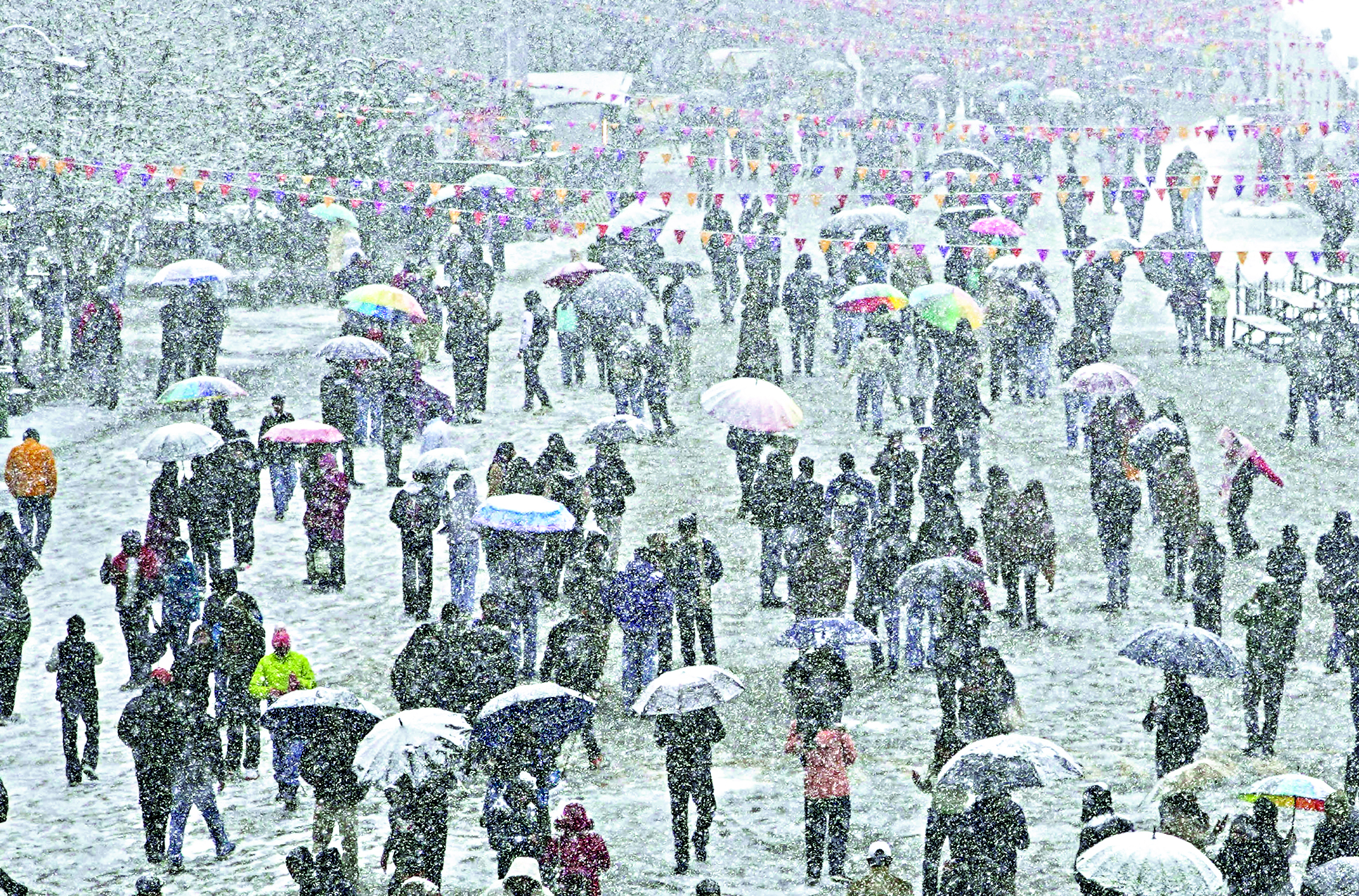Rain hits north India, mercury plunges; Kashmir reels under intense cold

New Delhi: Day temperatures dropped sharply in several areas of Punjab, Haryana and Himachal Pradesh after light rain hit parts of north India on Monday, even as intense cold wave conditions persisted in Kashmir with mercury dipping several degrees below freezing point.
In Himachal Pradesh, Shimla and nearby areas also witnessed light snowfall which led to the closure of 30 roads in the state.
People in the national capital woke up to a drizzle and fog with the minimum temperature settling at 8.6 degrees Celsius, a notch below the season’s average, according to the India Meteorological Department (IMD).
The maximum temperatures in Haryana and Punjab witnessed a sharp dip as rain lashed many parts of the two states.
According to the MeT office, Chandigarh, which received light rain during the day, recorded a maximum temperature of 13.7 degrees Celsius, down six notches against normal.
In Haryana, Ambala recorded a maximum temperature of 13.2 degrees Celsius, down six notches against normal while Hisar also had a cold day at a high of 14.1 degrees.
Cold weather conditions also prevailed in Karnal during the day at 13.6 degrees while Sirsa recorded a high of 14.8 degrees.
However, minimum temperatures hovered above normal at many places in Haryana including Hisar (10.8 degrees), Rohtak (11.8), and Gurugram (11.4).
In Punjab, Patiala braved the chill, recording a high of 13 degrees Celsius, which was six notches below normal.
Amritsar recorded a maximum of 16.4 degrees while Ludhiana recorded a high of 14.5 degrees.
The minimum temperatures at many places in Punjab hovered close to or below normal limits, with Gurdaspur reeling under severe chill at 4 degrees.
In Jammu and Kashmir, the weather office asked tourists to follow the advisory issued by the traffic police in view of the sub freezing temperatures and icy conditions over roads of important higher reaches in the Kashmir valley.
Intense cold wave conditions persisted in the valley leading to the freezing of water supply lines while a thin layer of ice covered the surface of several water bodies.



